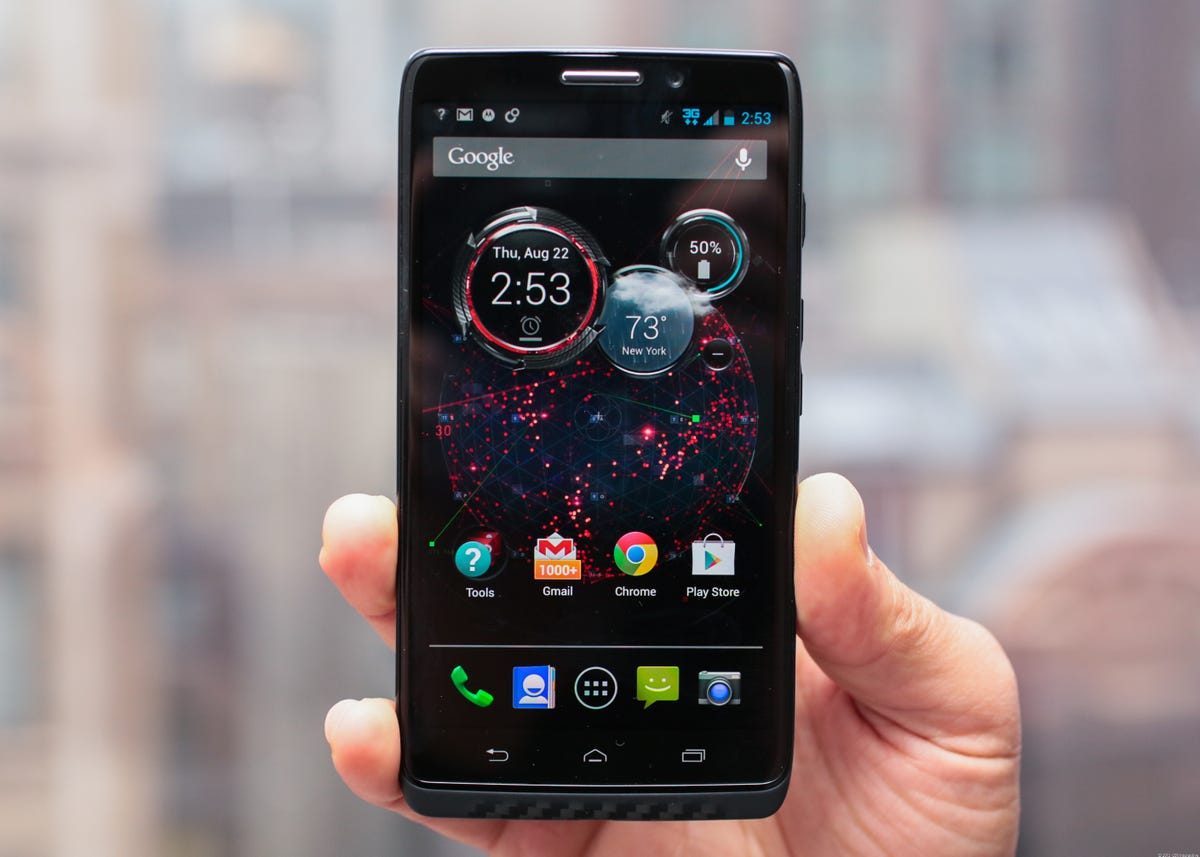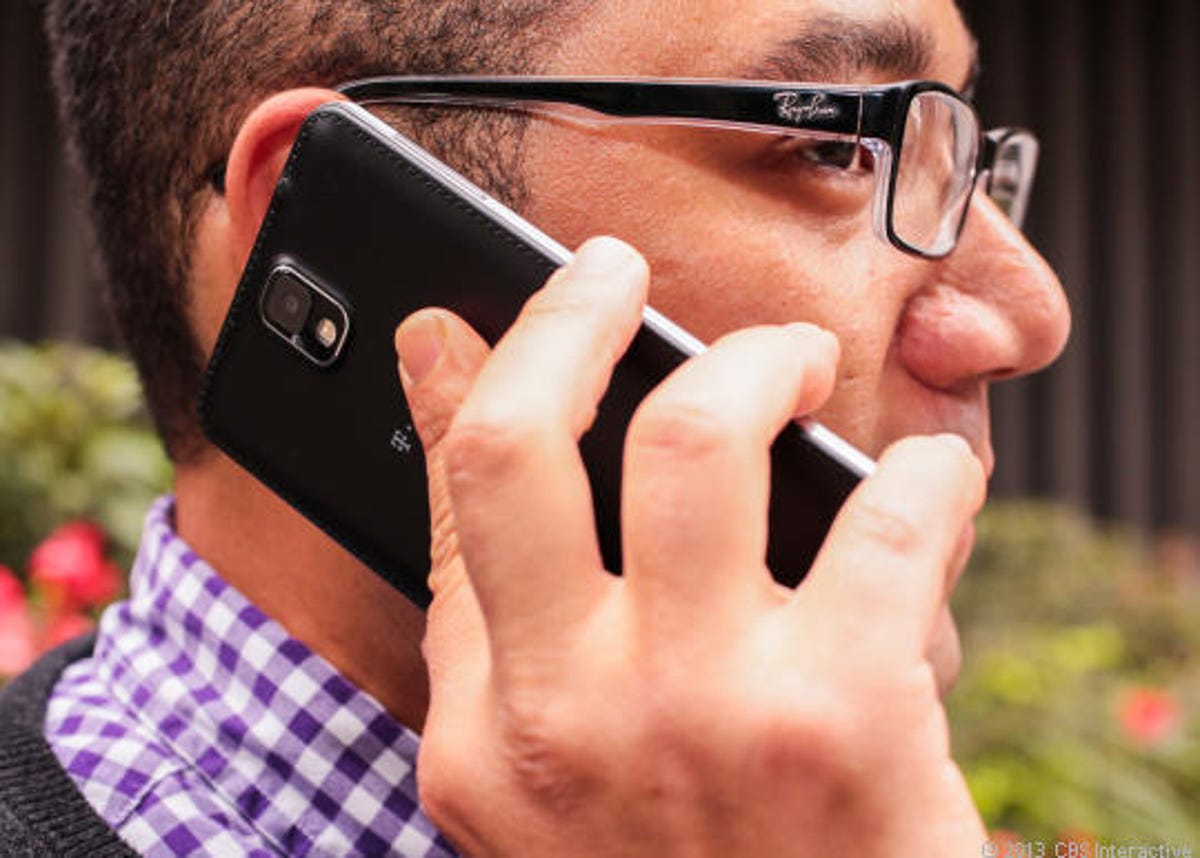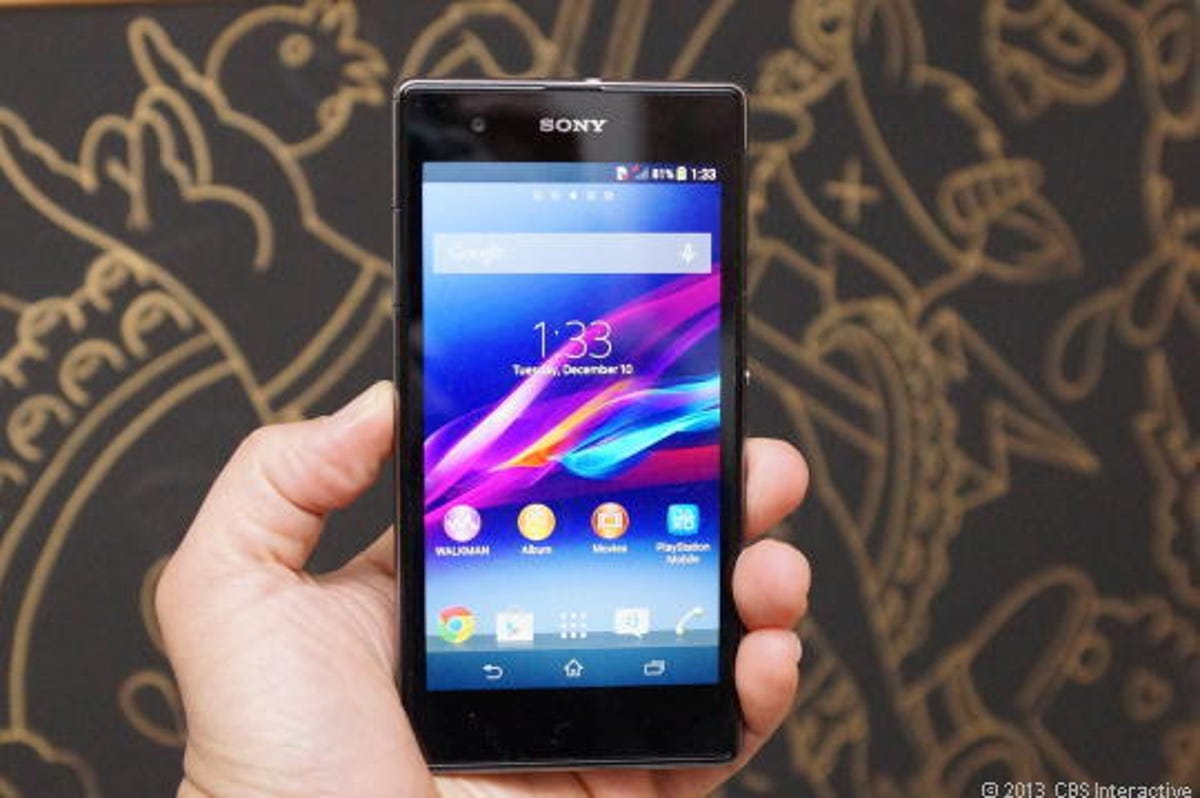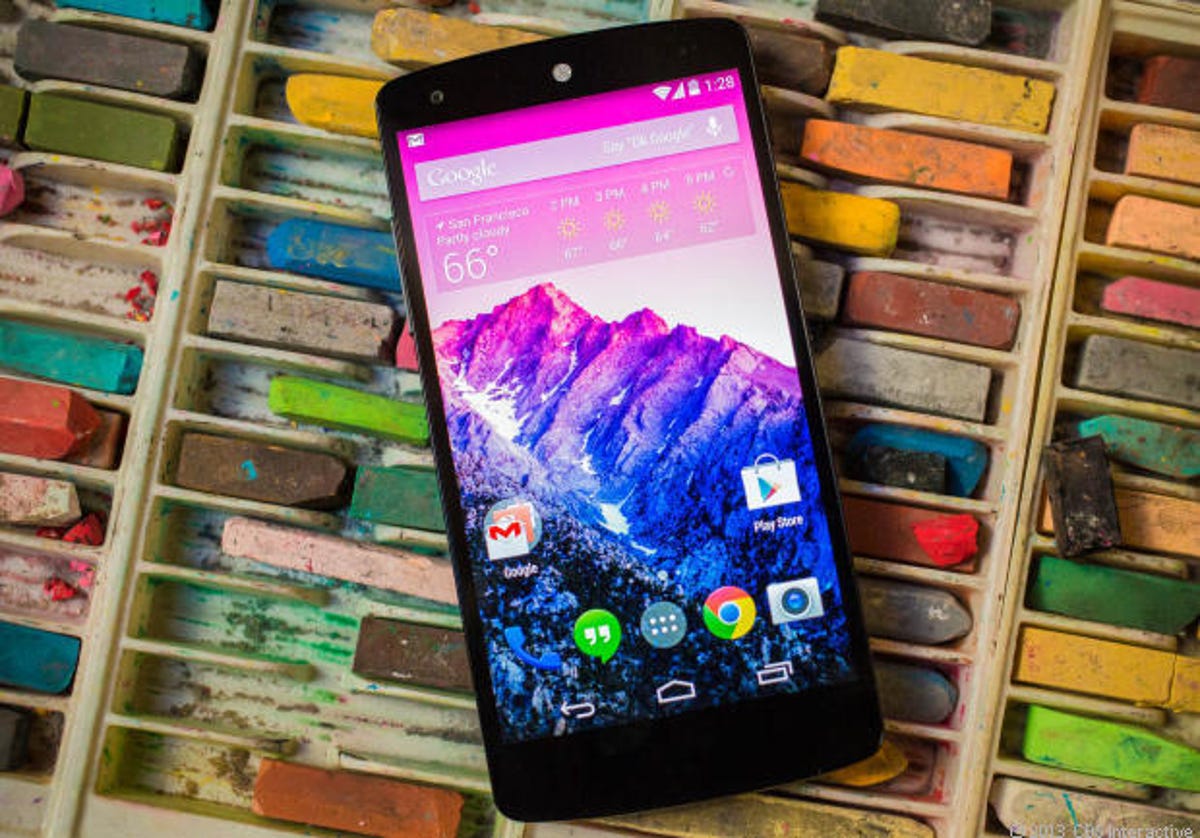As a phone reviewer, my life is an endless stream of cutting-edge devices. In fact I’m constantly juggling four or five mobile gadgets at any given time, many being the best mobile handsets money can buy. But even after living with a litany of fancy flagships from Samsung, Motorola, HTC, and Sony, it’s the scrappy Nexus 5 upstart that has finally won my heart, at least for now.
Believe me, settling on one device in my line of work is no easy feat. From the fantastically beautiful HTC One, or the compact yet freakishly advanced Motorola Moto X, to the Motorola Droid Maxx with its ridiculously unstoppable battery. I’ve had many short-term loves. But at the end of the day, I surprised myself by pushing all of them aside in favor of the newest Nexus.
Let me be clear, though. Picking a phone is a very personal decision, and what makes perfect sense to me or you may not for others. In my mind, though, the new Nexus adds up to a sum that’s greater than its parts. Here’s how I got there.


Now playing:
Watch this:
Google Nexus 5 souped up with Android KitKat, LTE, and…
3:16
HTC’s mighty metal machine
I won’t deny it. Last year I fell completely head over heels for the HTC One’s all-aluminum unibody chassis, solid feel and gleaming, polished edges that flat out scream luxury. I still get a thrill every time I scoop up its slightly curved back and slide it into my palm. Even so, after a while the One’s 5 ounces became a burden and I began yearning for a lighter device.
Other strengths of the One include a powerful set of stereo speakers framing the screen and HTC’s unique Sense UI skin it places over Android. Of all the manufacturer tweaks to Google’s OS, I like HTC’s the best — or more aptly put, have the most tolerance for it. That’s especially true now that recent updates let you turn off the annoying Blinkfeed news aggregator. At launch this feature by default occupied the primary home screen and was impossible to do away with.
Related stories
- LG once out-iPhoned the iPhone. Now it’s exiting the phone business completely
- Don’t bother with Android tablets
- A look back at the cutting-edge tech of 2010 — and how it’s shaped the decade since
I’m also a fan of the One’s stereo speakers and the resolution on its full-HD display (especially crammed into 4.7 inches). The latter is plenty bright, it delivers accurate colors and respectably wide viewing angles, and it packs more viewable real estate than the Moto X (which has the same size screen).
The camera, on the other hand, left me with mixed emotions. The camera app features are fun and quirky, but I can’t abide the low-res 4MP sensor and heavy-handed image processing. And when I considered the lack of uniform KitKat (HTC brought the new OS only to the select versions of the phone) and the aging Snapdragon 600 processor, I had no choice but to end my love affair with the HTC One. It is a sad, sad day.


Sarah Tew/CNET
The Moto X still has some magic
Lovingly crafted with comfort as a top goal, the Moto X is right up there designwise with the HTC One. The phone also has the distinction of being the reigning king of Android compactness. The handset features an even more pronounced curve to its back surface than the HTC One. The result is it fits my hand like a glove and squeezes into the tightest of pockets.
Though its 4.7-inch OLED screen feel a little claustrophobic compared with other devices, it is large given the Moto X’s small stature. And while resolution isn’t sharp as I’d like, colors on the Moto X’s OLED panel are vivid, saturated, and painted on a rich canvas of deep blacks.
Yet, the Moto X’s real appeal is its efficient software that can also perform a few slick tricks. My two favorite things in the Moto X’s arsenal are Active Display and its Quick Capture camera. The first transforms the entire screen into a huge notification zone while the latter fires up the camera app by simply twisting your wrist.
Honestly the alluring Moto X would be my next choice after the Nexus 5 — I’m particularly tempted by the unlocked GSM model that rocks a full 32GB of storage space for $379 — but two issues cool my fervor: its X8 processing platform is less powerful than the Nexus 5’s Snapdragon 800 and I’m concerned that Moto gadgets won’t receive quite as timely software upgrades with a Lenovo master. So, sorry, Moto X, but you’re not the one.


Sarah Tew/CNET
Long live the Droid Maxx
Extremely thin and covered in a futuristic and scratch-resistant Kevlar coating, the Droid Maxx is very handsomely appointed as well. And I certainly appreciate how the phone’s back surface is soft to the touch but provides a sure grip and repels finger grease handily.
Similar to the Moto X, Motorola chose to install a lower resolution 5-inch display on the Droid Maxx though which is not as crisp as the full-HD screen flaunted by its stiff flagship competition. Thanks to OLED technology, however, the Maxx showcases richly saturated colors, high-contrast, plus very wide viewing angles.
But that all pales in light of the Droid Maxx’s real selling point, its ludicrously large capacity battery. Indeed, the phone’s 3,500mAh power source propelled the Maxx for a long 15 hours and 50 minutes. That remains the best run time I’ve seen but right in line with previous Motorola Maxx devices.
You’ll find the same nifty hands-free voice command features flaunted by the Moto X here too, plus Quick Capture and Active Display. And I love that Verizon pushed an Android 4.4 KitKat update to the Droid Maxx early. Still, I have almost identical misgivings about the Maxx as I do for the Moto X. Though its clear Motorola and Google optimized the heck out of the Droid Maxx (and all their 2013 phones) to run smoothly and with pep, there’s a certain piece of mind I find from knowing a premium Snapdragon 800 has my back. Sorry, but the X8 doesn’t quite do that for me.


Sarah Tew/CNET
To Note or not to Note
On the other side of the size spectrum sits the intimidatingly large Samsung Galaxy Note 3. Despite my trepidations, once I got my mitts on the device it became crystal clear that the Note 3 is a phablet design triumph that feels more like a small paper notebook than a huge smartphone. Samsung successfully whittled its latest stylus-toting device down while simultaneously upping the screen’s dimensions slightly (compared to the Note 2).
And, boy, what a screen this machine has! With a full-HD resolution display that serves up a vast diagonal size of 5.7 inches across, the Note 3 is akin to carrying an HDTV in your pocket. It’s an excellent mobile TV set too boasting a panel which gets extremely bright, displays colors that sing and detail as crisp as a sweet, ripe apple.
When forced up against the harsh physical reality of snug pants pockets, however, Samsung’s laudable efforts to disguise the Note 3’s true girth fail. During my time with the device I’d often find myself dropping it in favor of the Moto X’s, Nexus 5’s, or even Droid Maxx’s more manageable size. Another aspect I find irritating about the Note 3 is Samsung’s bloated software skin it slathers all over its Android 4.3 Jelly Bean OS (sorry, folks, no KitKat yet).
On the other hand, I do love the Galaxy Note 3’s powerful Snapdragon 800 processor, the generous memory, and the excellent 13-megapixel camera. There’s a reason this is the planet’s best phablet. The trouble is, I found it at times was way too much handset for me to handle.


Sarah Tew/CNET
A screen that kills the deal
The odd fish in the water in more ways than one, Sony’s Xperia Z1S definitely stands out from the herd of lookalike Android slabs. Sure, it’s a dark black rectangle, but that’s where its similarities with other handsets end. Like Sony’s other Xperia phones, the Z1S is dust resistant and able to be dunked in water to a depth of 45 feet (for up to 30 minutes). The slick-looking gadget is chiseled from lustrous glass too; just make sure your hands are clean since the Z1S sucks up fingerprints like a sponge.
The most serious of the Xperia Z1S’ design flaws, though is its subpar LCD screen. Sure, the large 5-inch display features a Full HD resolution, but the Z1S is more difficult to see off-angle than its competitors. You may not think that’s a big deal but trust me when I say it’s a real drag. For instance, not being able to read the Z1S even when it’s resting on my desk next to my keyboard gets old fast.
The Xperia Z1S runs Android Jelly Bean 4.3, which is a letdown as well and the phone’s special Sony UI isn’t as cleanly arranged as Google’s vanilla flavor of software. Also, while Qualcomm’s beefy Snapdragon 800 delivers plenty of performance pep to the handset, that horsepower doesn’t carry over to the Z1S’ camera. Image quality is beautiful, but it takes its own sweet time between shots.
That’s why Xperia Z1S, unlike the Xperia Z1 Compact, which sadly is not sold in the US, leaves me flat.


Brian Bennett/CNET
Doubling down on the Nexus 5
All of that brings me back to my sweet Nexus 5. Admittedly, it took its time to win me over. At first glance, I thought the Nexus 5 to be pretty plain. Once I scooped the device up, though, I was hit in the face with an aggressively sleek and minimalist presence rivaling that of a stealth fighter.
Surprisingly the phone’s jet-black color scheme (also available in white), which initially struck me as unexciting, took on an entirely different dimension in my hands. The Nexus 5’s chassis may be plastic but it is satisfyingly dense and feels just as thoughtfully constructed as its rivals. Additionally the phone’s gummy soft-touch surfaces help the gadget stay put properly in my palm.
LG, the actual manufacturer of the phone, equipped the Nexus 5 with a crisp Full HD 5-inch LCD (1,920×1,080, IPS) screen. It’s not quite as bright as its the HTC One’s display and certainly lacks the eye-popping, vivid colors and deep blacks of the Note 3’s OLED screen. That said, in daily use I find the Nexus 5’s panel quite satisfactory. At its brightest setting the phone’s display pumps out plenty of lumens to read comfortably under strong sunlight. Additionally I could place the device on shelves, desktops, or other off-angle viewing stations to enjoy video or read text without trouble.


Josh Miller/CNET
Software, though, is the Nexus 5’s true siren song. Leaping out of the box fully decked out with the freshest version of Android the world has known plus stout promises by Google to supply timely updates, the Nexus feels extremely responsive and sports a clean, modern interface. I also like how the phone heavily integrates Google Now advanced search and notification features into its UI. And with a Snapdragon 800 chip at its core, the Nexus 5 should have enough computing power to tackle any Android updates that occur for quite a while.
Also, despite the complaints I’ve heard around the campfire, the Nexus 5’s 8-megapixel camera does a satisfying enough job covering basic photo and video duties in a pinch. I know it’s not up to par with the cameras on the iPhone 5S, Nokia Lumia 1020, or Galaxy Note 3 but honestly I can live with that given the device’s other positives.
That’s why for an unlocked life free of carrier and manufacturer bloatware, I’m Nexus 5 all the way. Of course if something more impressive comes along, all bets are off.



